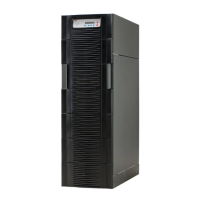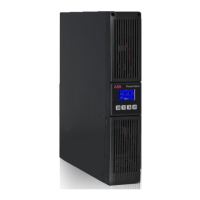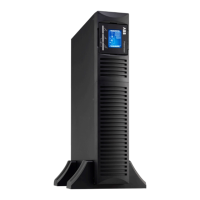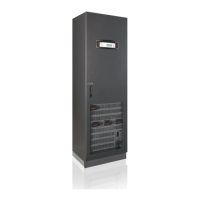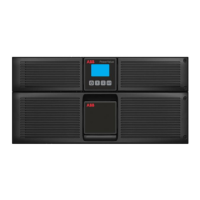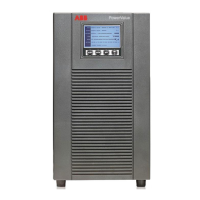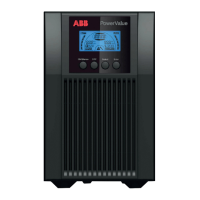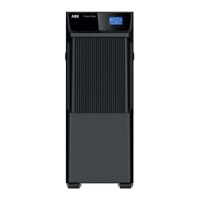Section-1
04-3004_S1_OPM_ABB_POWERSCALE_10-50kVA_EN_150113.doc Page 8/20 ABB
Printed in Switzerland – Modifications reserved
Hence, the function of FBM system is to prolong the battery life considerably compared to traditional systems. In a
traditional online UPS the inverter also causes ripple-current to be fed to batteries causing corrosion.
(*) depending of the effective load in kW used by system.
1.2.4.3 Feature : DPA Technology - Decentralized Parallel Architecture
The UPS product features DPA paralleling technology that provides N+X redundancy without introducing a single-
point-of-failure. The products utilizing the DPA technology are completely autonomous be means of individual
Power Units, Bypasses, CPU’s, Control Panels and separate battery configuration for each single module.
The DPA technology makes it more reliable than traditional paralleling techniques. A parallel UPS system means
the linking together of two or more UPS units in parallel so that in the unlikely event one fails the other can
automatically take up the load. Traditionally a parallel redundancy configuration is achieved by having a random or
fixed master-slave relationship among the UPS units. This master logic gives out individual commands to all the
slaves units. Unfortunately this can lead to a single-point-of-failure for the whole system because if the master logic
or communication to slaves fails, and causes the whole UPS system to be in trouble.
The DPA technology was developed as a Multi-Master logic concept with separated independent regulation and
logic buses to allow parallel capacity system and to maintain the highest system availability. An industry leading
paralleling technology in its own right, the DPA technology enables you to set up a parallel redundant system
giving you 100% conditioned power at all times. Its unique decentralized design eliminates the system level single
point of failure inherent in traditional parallel UPS, and exponentially increases the reliability of the overall system.
DPA technology allows up to twenty UPS modules to cover the same load in parallel and redundant configuration.
No vulnerable master logic is needed in this design. It provides automatic load sharing and module level
redundancy with nothing other than the power connecting to the PowerScale version of UPS.
1.2.5 QUALITY STANDARDS AND UPS CLASSIFICATION CODE
The PowerScale will provide your critical equipment with a steady and reliable power supply for many years.
The unique PowerScale belongs to the newest generation of midrange 3phase UPS-Systems. High reliability, low
operating cost and excellent electrical performance are only some of the highlights of this innovative UPS solution.
The criteria and methods implemented for the design and manufacture correspond to the most stringent quality
standards.
The manufacturer is certified successfully in every areas according to the model of the International Standard ISO
9001/EN 29001 and ISO 14001. The Certification of UPS with the operating performance according to the Norm
IEC 62 040-3 and VDE 0558 Part 530 is accomplished. With it the UPS has the Classification Code VFl-SS-111.
1.2.6 SINGLE/PARALLEL CONFIGURATIONS
Single UPS Configuration: Parallel UPS Configurations:
It is possible to parallel a PowerScale UPS (up to 20 units) in order to increase power capacity or for power
redundancy purpose.
